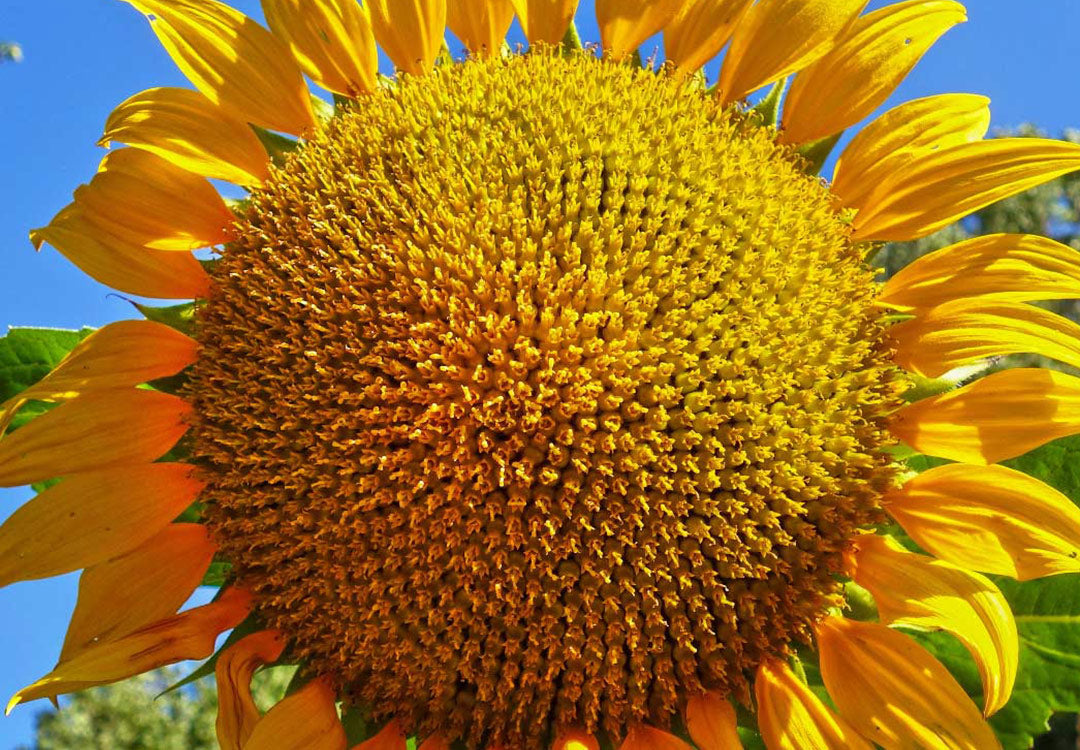
The Asteracaea family, also known colloquially as the asters, is a great dicot plant family to learn early on in your plant identification journey because their flowers are very interesting.
The family includes genera (plural of genus) such as daisies, sunflowers, thistles and dandelions, which have members everywhere.
A disproportionate number of the weeds we fight against are from the aster family. But even though we might pretend that we hate them, deep down we know that they are every bit as beautiful as the high-maintenance flowering plants that we try and fail to grow ourselves.
Aster flowers, leaves, stems and roots are generally safe to consume or make into a tea, as long as you’ve had someone competent in identifying safe wild foods give you the green light.
With that being said, some are tastier than others. I can personally recommend dandelions as an especially delicious plant to eat whole, flowers, leaves, roots and all. Try starting off with eating just the new leaves and flowers if you don’t like bitter foods.
Description
Flowers in the aster family are very distinctive; there’s really no other inflorescence quite like them.
They are all compound flowers, meaning that they’re inflorescences that only appear to be simple flowers. The larger petals around the outside all belong to individual flowers, and if you look closely you’ll see there are countless tiny individual flowers that spiral into the centre.

A chamomile flower, which is a non-specific term for a Bellis sp. look-alike. Notice how the tiny flowers are opening from the outside first, while the inner buds are the youngest on this example, which makes this inflorescence a raceme. Image source
The correct term for the type of inflorescence they are is a head or capitulum, which is a short, dense spike where the flowers are attached to a flat peduncle.
Most aster capitulums are in a disc, but the shape can differ as in the case of billy buttons or thistles.
Look for sepal-like bracts (modified leaves) wrapped around the flower head. These look different between varieties and so are one of the best tools for identification.
The true sepals are called pappuses (individually pappus) and are wrapped around each individual tiny flower. They become the parachutes of the fruit, which is called an achene and when you blow on a dandelion clock to make a wish, these pappuses carry the seeds to a fresh patch of ground to colonise.
Flowers, Fruits & Leaves
Sepals: called pappuses, and are innumerable. The bracts around the compound flower are not true sepals.
Petals: the petals around the outside of the capitulum’s border each belong to an individual flower.
Male: 5 stamina (stamens) fused around the pistil.
Female: antannae-like stigmas with stamina fused around the pistil below.
Fruit: called achenes, are attached to the dry sepals which catch the wind and spread. Each achene corresponds to an individual flower within the inflorescence.
Seeds: within the achenes are the tiny seeds, which you probably won’t ever need to look at.
Leaves: often, though not always with lobed or serrated margins.
Noteworthy Types
Sunflower Helianthus spp. seeds are an aster crop, and the flowers are also sold for ornamental purposes in floristry before they go to seed.

Sunflower Helianthus sp. head with all of its flowers open, ready to go to seed. Image source
Taracacum is the genus of dandelions, and it’s a massive one that includes around 2500 species of lobe-leafed, tap-rooted, rosette-habited medicinal plants that have been traditionally used in many cultures. They’re packed full of vitamins, minerals and fibre, including prebiotic fibre. Plus they’re delicious to snack on while we’re in the garden.

A dandelion Taraxacum sp. with compound flowers and rosette dentate leaves., growing in the pavement with a taproot. Image source

Dandelion Taraxacum sp. seed head showing achenes and withering bracts. Each achene (fruit) is a successfully pollinated tiny individual flower, and the parachute is the fused sepals. Image source
False dandelions are also incredibly common and can originate from a number of different genera that can look very similar to dandelions. Most of these types are fine to eat, but some like capeweed should be avoided.

False dandelions like cat’s ear Hypochoeris radicata have very similar flowers to dandelions, as well as having a rosette of leaves, however are not true dandelions. Image source
Billy Buttons in the Craspedia and Pycnosorus genera (genus plural) have capitula (capitulum plural, as in compound flowers) that are hemispherical, and individual flowers form a ball at the tip of a scape.

Billy buttons Craspedia sp. standing on their stalks. Image source
True daisies are in the Bellis genus, however many members of the aster family are referred to simply as daisies.

Seaside daisies Erigeron glaucus are not true daisies in the Bellis genus but are called daisies regardless. Image via Plants Grow Here.
There are a range of genera that are termed thistles that all share the same general growing habit and capitulum appearance. They may or may not be prickly.

Cirsium arvense, a type of thistle. Image source
Artichokes Cynara scolymus, which are a commercially farmed food, are an aster capitulum in its bud stage, just before it opens. If you allow an artichoke to flower on the plant and go to seed, it’s apparent that it’s a type of thistle.

Artichokes Cynara scolymus in flower, a type of thistle and member of the aster family. Notice the bracts encapsulating the flower head. Image source
Conclusion
Sunny aster flowers are easy to distinguish from simple flowers because they lack sexual organs that are easily visible. It’s only when you look up-close that you can see the different flower parts of individual flowers.
If you haven’t already read my articles on plant identification and scientific names, I recommend reading those to get a broader picture of the topic. Alternatively, you can browse some of my other plant families, subfamilies and genera below.
